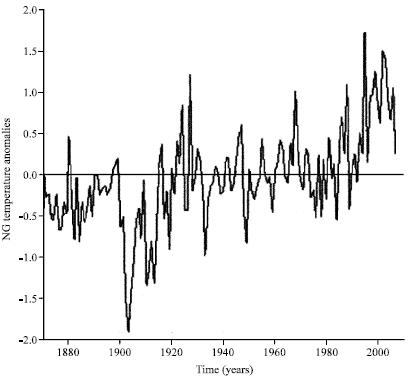Egypt’s mean annual temperature is 23͒°C/73°F. Its climate is warm and desertlike, with a mean annual rainfall of 3.3 cm/1.3 in. The majority of its freshwater comes from the Nile River, which annually floods in the summer months, most often August and September. Three principal tributaries, the White Nile, Blue Nile, and the Atbara, contribute to this flood, with the Blue Nile, originating in the rainy mountains of Ethiopia, dominating most. In years to come, it is likely that rainfall there will become more erratic, leading to more variable floods with likely periods of drought in between.
The largest impacts on Egypt will come via the Nile. Growing competition for its fresh water and increasingly erratic flow rates are almost certain to reduce the amount of freshwater available for irrigation and human consumption, despite a population likely to keep rising. In addition, with lower river flow rates and sea level rise in the Mediterranean, salt water intrusion throughout the delta will increase. Adding to the severity of this will be subsidence of the delta as it is increasingly starved of sediment due to the major upstream dams, and as the Eastern Mediterranean becomes an even saltier, more effective evaporation basin.
While Egypt’s role in the global warming has been quite small compared to the world’s major economies, its own policies boomerang quite harshly on it in a climate change-plagued world due to the country’s almost complete reliance on one single environmental feature–the Nile River–which it shares with several others. Other rivers globally face the same problems of overconsumption, such as the Colorado and Rio Grande, though without the huge geopolitical implications.
Tomorrow: introduction to Kenya.
Be brave, and be well.









No comments:
Post a Comment